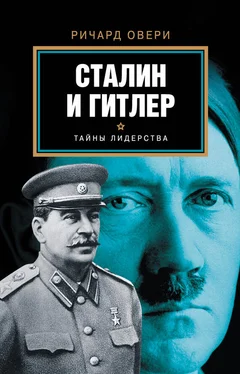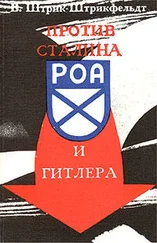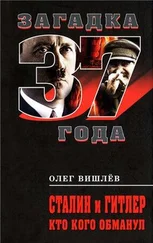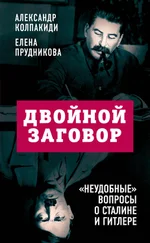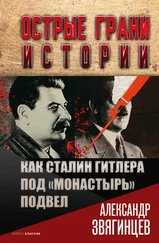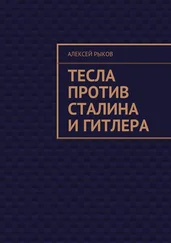7. I. Kershaw The ‘Hitler Myth’: Image and Reality in the Third Reich (Oxford, 1987), pp. 264–6.
8. W. Lewis The Hitler Cult (London, 1939); E. Alexander Der Mythos Hitler (Zurich, 1937).
9. See S. Labin Stalin’s Russia (London, 1949), pp. 6Iff for contemporary views of the Stalin cult.
10. A. Hitler Mein Kampf (ed. D. C. Watt, London, 1969), pp. 403, 408–9; R. Zitelmann Hitler: the Politics of Seduction (London, 1999), p. 391.
11. H. Trevor-Roper (ed.) Hitler’s Table Talk, 1941–1944 (London, 1973), pp. 385–6, 508, conversation of 31 March 1942 and 31 May 1942.
12. G. Macdonogh The Last Kaiser: William The Impetuous (London, 2000), p. 453.
13. J. Stalin Foundations of Leninism (New York, 1939), p. 59.
14. Stalin, Foundations, pp. 110, 118.
15. J. Stalin Works (13 vols, Moscow, 1952–55), vol. xiii, pp. 107–9, ‘Talk with the German author Emil Ludwig’, 13 December 1931.
16. D. Brandenberger and A. Dubrovsky ‘“The People need a Tsar”: the Emergence of National Bolshevism as Stalinist Ideology 1931–1941’, Europe – Asia Studies, 50 (1998), pp. 873–92; see too D. Brandenberger National Bolshevism: Stalinist Mass Culture and the Formation of Modern Russian National Identity 1931–1956 (Cambridge, Mass., 2002), pp. 56–8, 86–90, 100–03.
17. A. Resis (ed.) Molotov Remembers: Inside Kremlin Politics. Conversations with Felix Chuev (Chicago, 1993), pp. 181, 213.
18. E. van Ree The Political Thought of Joseph Stalin (London, 2002), p. 163.
19. Voprosy Istorii, 1953, no. 11.
20. B. Rosenthal New Myth, New World: from Nietzsche to Stalin (Pittsburgh, 2002), p. 377.
21. R. Bendix Max Weber: an Intellectual Portrait (London, 1966), pp. 299–307; J. Winckelmann (ed.) Max Weber: gesammelte politische Schrifte (Tübingen, 1958), pp. 505fr, ‘Politik als Beruf, October 1919.
22. D. Beetham Max Weber and the Theory of Modern Politics (London, 1974), p. 227.
23. W. G. Runciman (ed.) Max Weber: Selections in Translation (London, 1974), p. 226.
24. Rosenthal, New Myth, New World, p. 377.
25. A. Storr (ed.) The Essential Jung: Selected Writings (London, 1983), pp. 191, 202–3.
26. A. Kolnai The War Against the West (London, 1938), p. 159.
27. G. Scheele The Weimar Republic: Overture to the Third Reich (London, 1946), pp. 229–30.
28. B. G. Rosenthal ‘Nietzsche, Nationality, Nationalism’, in A. Freifeld, P. Bergmann and B. G. Rosenthal (eds) East Europe reads Nietzsche (New York, 1998), pp. 190–97; M. L. Loe ‘Gorky and Nietzsche: the Quest for a Russian Superman’, in B. G. Rosenthal (ed.) Nietzsche in Russia (Princeton, NJ, 1986), pp. 251–2.
29. Y. Yevtushenko (ed.) Twentieth-Century Russian Poetry (London, 1993), p. 81; on the use of religious imagery and metaphor see N. Tumarkin Lenin Lives! The Lenin Cult in Soviet Russia (Cambridge, Mass., 1997), pp. 18–23; M. D. Steinberg Proletarian Imagination: Self, Modernity, and the Sacred in Russia, 1910–1925 (Ithaca, NY, 2002), pp. 254–5, 273–8.
30. Tumarkin, Lenin Lives! p. 21; on Lunacharsky see A. L. Tait ‘Lunacharsky: a “Nietzschean Marxist”?’, in Rosenthal, Nietzsche in Russia, pp. 275–92.
31. On the Tsar cult and its decline see O. Figes and B. Kolonitskii Interpreting the Russian Revolution: the Language and Symbols of 1917 (New Haven, Conn., 1999), chs 1–2; Tumarkin, Lenin Lives! pp. 6–12.
32. Pravda, 18 December 1939.
33. W. Laqueur Stalin: the Glasnost Revelations (London, 1990), p. 180.
34. Tumarkin, Lenin Lives! pp. 54–5.
35. I. Bonnell Iconography of Power: Soviet Political Posters under Lenin and Stalin (Berkeley, Calif., 1997), pp. 140–54; S. Davies Popular Opinion in Stalin’s Russia: Terror, Propaganda and Dissent, 1934–1941 (Cambridge, 1997), pp. 147–9.
36. Tumarkin, Lenin Lives! p. 80.
37. Tumarkin, Lenin Lives! p. 82.
38. B. Ennker ‘The Origins and Intentions of the Lenin Cult’, in I. D. Thatcher (ed.) Regime and Society in Twentieth-Century Russia (London, 1999), pp. 119–25; Zbarsky and Hutchinson, Lenin’s Embalmers, pp. 9–25 for details on the decision.
39. Ennker, ‘Lenin Cult’, pp. 123–4; Zbarsky and Hutchinson, Lenin’s Embalmers, pp. 25–31; Tumarkin, Lenin Lives! pp. 191–6, 205.
40. Bonnell, Iconography of Power, pp. 148, 150; Tumarkin, Lenin Lives! pp. 126–7; R. Löhmann Der Stalinmythos: Studien zur Sozialgeschichte des Personenkultes in der Sowjetunion (1929–1935) (Münster, 1990), pp. 47–56.
41. Storr, The Essential Jung, p. 210, The Development of Personality’, 1934.
42. Lewis, Hitler Cult, p. 47.
43. IWM, FO 645/161, interrogation of Christa Schroeder, 13 September 1945, p. 5.
44. See, for example, G. Ueding ‘Rede als Fürherproklamation’ in J. Kopperschmidt (ed.) Hitler der Redner (Munich, 2003), pp. 441–53.
45. M. Dodd My Years in Germany (London, 1939), p. 180.
46. M. Loiperdinger ‘“Sieg des Glaubens” – Ein gelungenes Experiment nationalsozialistischer Filmpropaganda’, in U. Hermann and U. Nassen (eds) Formative Ästhetik in Nationalsozialismus (Weinheim, 1994), pp. 40–45.
47. V. Cowles Looking for Trouble (London, 1941), pp. 153–4.
48. Lewis, Hitler Cult, p. 39.
49. J. H. Billington The Face of Russia (New York, 1998), p. 210.
50. See, for example J. Stalin Problems of Leninism (Moscow, 1947), pp. 250, 285, 439.
51. Resis, Molotov Remembers, pp. 175–6.
52. Hitler’s model was the unmarried mayor of pre-war Vienna, Karl Lueger. See B. Hamann Hitler’s Vienna: a Dictator’s
Apprenticeship (Oxford, 1999), pp. 375–8; See too Public Record Offi ce, Kew, London FO 1031/102 ‘Women around Hitler’, Memorandum by Karl Brandt, 6 February 1946: ‘Hitler wished to keep the mystic legend alive in the hearts of the German people that so long as he remained a bachelor, there was always the chance that any out of the millions of German women might possibly attain the high distinction of being at Hitler’s side.’
53. Speer, Inside the Third Reich, p. 114.
54. E. Barker Refl ections on Government (Oxford, 1942), p. 375.
55. Kolnai, War against the West, p. 153.
56. Kolnai, War against the West, pp. 156, 158.
57. Stalin, Foundations, pp. 109–10.
58. Bonnell, Iconography of Power, pp. 157–9.
59. Tumarkin, Lenin Lives! pp, 252–3; Rosenthal, New Myth, New World, pp. 375, 379; S. Davis The Leader Cult: Propaganda and its Reception in Stalin’s Russia’, in J. Channon (ed.) Politics, Society and Stalinism in the USSR (London, 1998), pp. 117–18.
60. Labin, Stalin’s Russia, p. 71; see too van Ree, Political Thought of Joseph Stalin, p. 162.
61. Bonnell, Iconography of Power, pp. 162–4; Labin, Stalin’s Russia, p. 67.
62. van Ree, Political Thought of Joseph Stalin, p. 165.
63. C. Schmölders Hitlers Gesicht: Eine physiognomische Biographie (Munich, 2000), p. 145.
64. Schmölders, Hitlers Gesicht, pp. 39–40; on the presentation of the image see too U. Kühn ‘Rede als Selbstinszenierung – Hitler auf der “Bühne”’, in Kopperschmidt, Hitler der Redner, pp. 368–79; K. Protte ‘Hitler als Redner in Fotografi e und Film’, in Kopperschmidt, Hitler der Redner, pp. 243–54.
65. Schmölders, Hitlers Gesicht, p. 104.
66. Schmölders, Hitlers Gesicht, pp. 148–9; see too C. Koonz The Nazi Conscience (Cambridge, Mass., 2003), pp. 77–9.
67. Bonnell, Iconography of Power, p. 137.
68. Bonnell, Iconography of Power, p. 157.
69. Rosenthal, New Myth, New World, pp. 380, 386.
70. Löhmann, Der Stalinmythos, p. 27.
71. G. F. Alexandrov et al. Joseph Stalin: a Short Biography (Mocow, 1949); see too van Ree, Political Thought of Joseph Stalin, pp. 162–5.
72. J. J. Barnes and P. P. Barnes Hitler’s Mein Kampf: Britain and America: a Publishing History 1930–39 (Cambridge, 1980), pp. 1–2; see too W. Maser Mein Kampf: Der Fahrplan eines Welteroberers: Geschichte, Auszüge, Kommentare (Esslingen,
Читать дальше
Конец ознакомительного отрывка
Купить книгу
